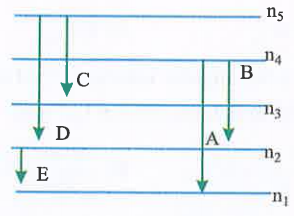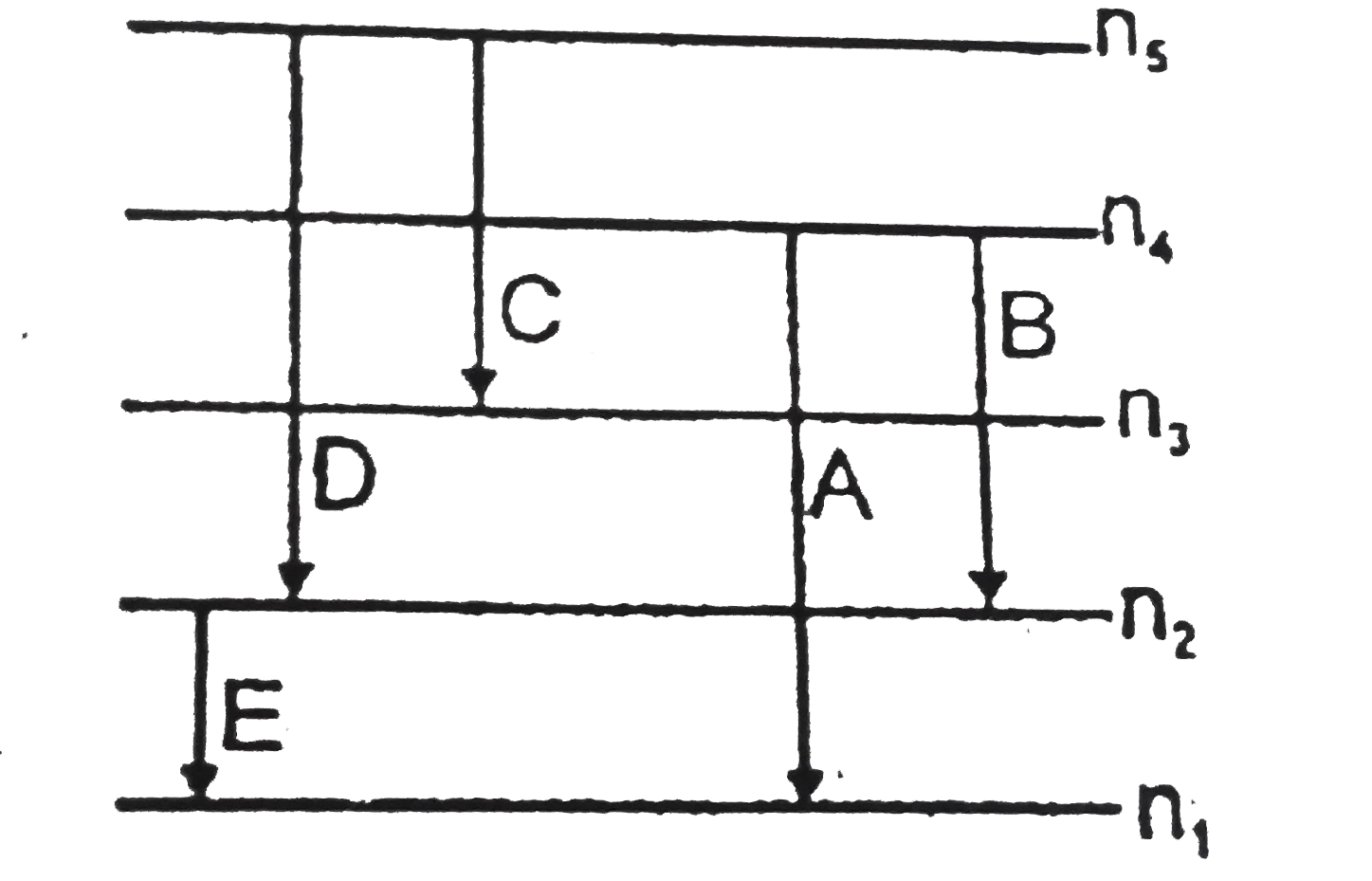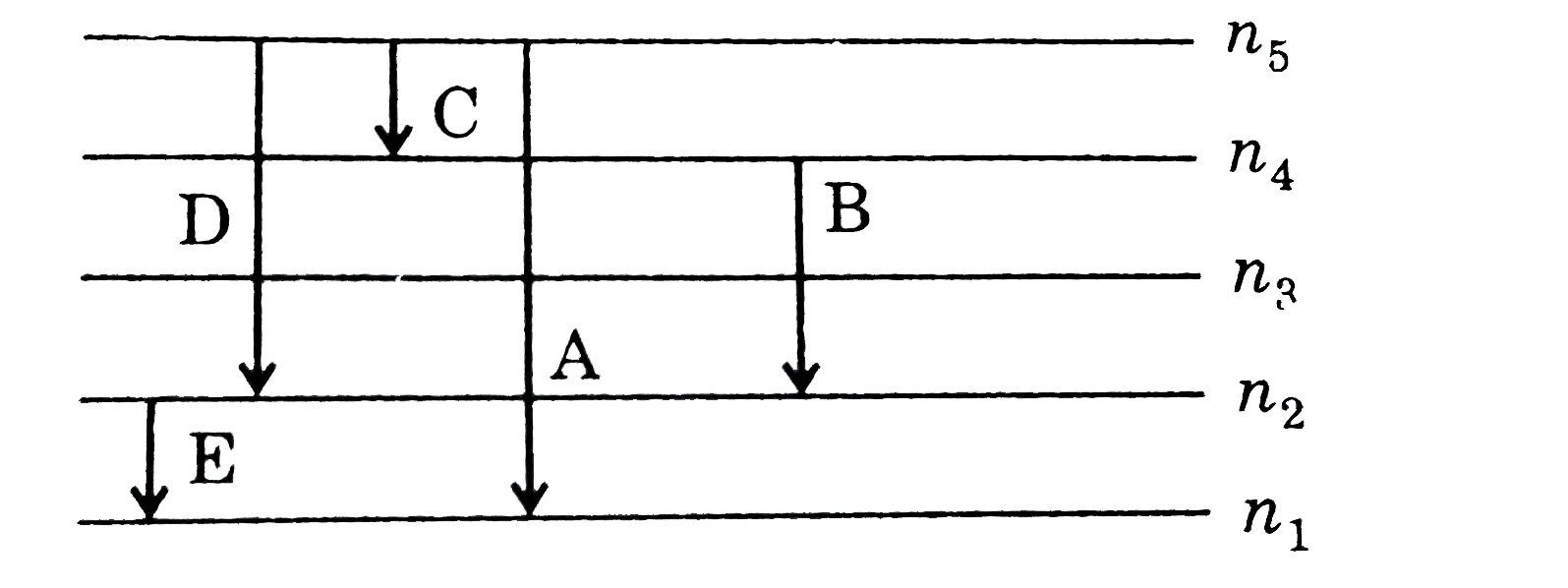For a hypothetical H like atom which follows Bohr's model, some spectral lines were observed as shown. If it is known that line 'E' belongs to the visible region, then the lines possibly belonging to ultraviolet region will be (n1 is not necessarily ground state). [Assume for this atom, no spectral series shows overlaps with other series in the emission spectrum

A
B and D
B
D only
C
C only
D
A only
Video Solution
Text Solution
The correct Answer is:D
Transition E is the visible region, to get more energy (UV region), higher transition is requred than E i.e A only
|
Topper's Solved these Questions
Similar Questions
Knowledge Check
For a hypothetical H like atom which follows Bohr's model, some spectral lines were observed as shown.If it is known that line 'E' belongs to the visible region, then the lines possibly belonging to ultra violet region will be (n1 is not necessarily ground state )
[Assume for this atom, no spectral series shows overlap with other series in the emmission spectrum]
 AB and DBD onlyCC onlyDA only
AB and DBD onlyCC onlyDA onlyFor a H-like atom which Bohr's model some spectral lines were observed as shown If it is known that line E belongs to visible region then the correct statement(s) is/are for following transition.
 AThere cannot be any line in UV regionBonly line possibly belonging to ultraviolet region is ACLine having shortest wavelength is ADLine having least energy is C.
AThere cannot be any line in UV regionBonly line possibly belonging to ultraviolet region is ACLine having shortest wavelength is ADLine having least energy is C.How many spectral lines are seen for hydrogen atom when electron jump from n2=5 to n1=1 in visible region ?
A2B3C4D5
The atomic hydrogen emits a line spectrum consisting of various series. Which series of hydrogen atomic spectra is lying in the visible region ?
View SolutionTotal different spectral lines observed in between 11th excited state and 3rd energy level in H-atom emission spectrum are:
View SolutionWhich of the following is/are correct ?
I The spectral series Lyman of the hydrogen atom lies in the visible region of the electromagnetic spectrum
iI Rutherford's atomic model is not stable.
View SolutionNumber of spectral line produced when electron jumps from gamma line region of Balmer series to ground state in hydrogen atom.
View SolutionWhich of the following links lines of the H-atom spectrum belongs to the Balmer series ?
View Solution
